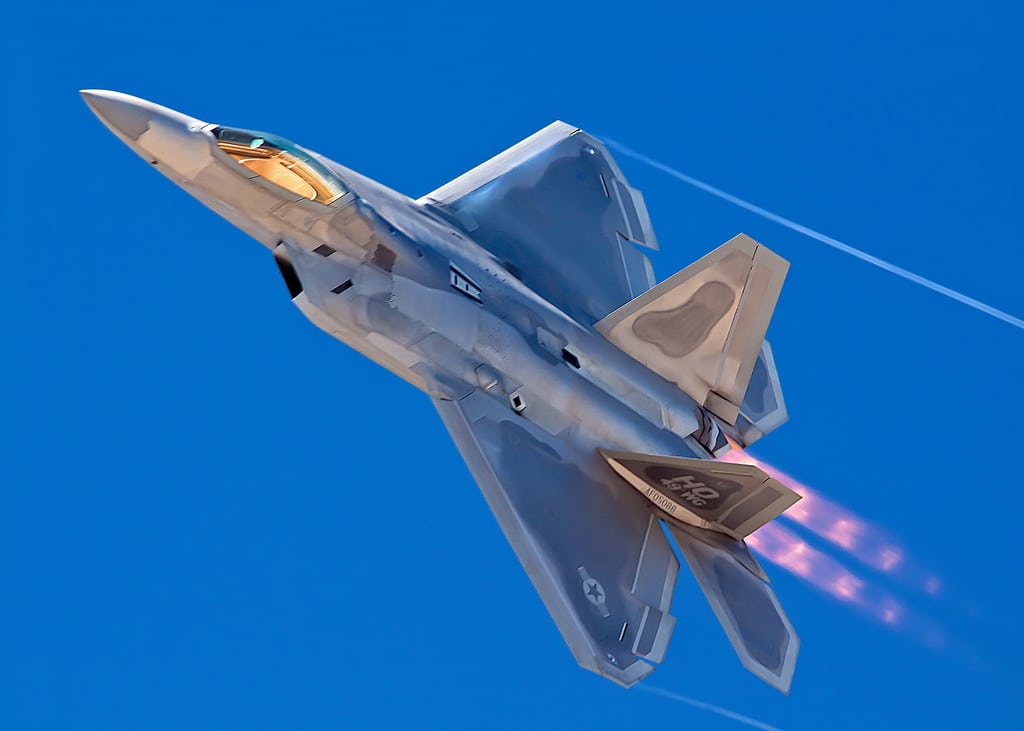
The US Air Force and Lockheed Martin have had success upgrading the F-22 for many years with new software
The US Air Force and Lockheed Martin have had success upgrading the F-22 for many years with new software

By Kris Osborn, President, Warrior
The US Air Force and Lockheed Martin have had success upgrading the F-22 for many years with new software, weapons interfaces, coating, radar and communications technology, yet the effort is now taking another step to add new longer-range targeting and sensing to the famous Raptor. The concept, long on the radar and heavily emphasized by the Air Force, is to ensure the air dominance platform can remain relevant and cutting edge well into future decades. Emerging onto the scene in the late 1990s, the F-22 is widely regarded as the pe-eminent air superiority platform in the world given its Mach 2.25 speeds and advanced thrust to weight ratio, yet the changing threat environment has required the Air Force and Lockheed to consistently pursue new upgrades. The air frames have remained viable, yet advancents to its avionics, electronics and weapons have extended its attack range, hardened guidance systems for its AIM-120D and AIM-9X air-launched weapons and preserved many of its stealth properties.
Building on this, new Air Force efforts to further upgrade the F-22 are aimed at increasing range and fidelity of its targeting and sensing, according to an essay in TWZ. One such possibility suggested in the essay includes the addition of the well-known Infrared Search and Track technology, a new generation of hardened targeting technology intended to function effectively in an EW environment and improve range, precision and guidance for the aircraft's weapons systems. IRST has already been integrated into the US Navy's F/A-18 fleet as well as other aircraft, and it would make sense that it would be added to the F-22.. However, it is likely that new sensing for the F-22 goes beyond IRST and incorporates a new generation of sensing technologies.
F-35-like sensing
The prospect of increasing sensing and targeting for the F-22, which TWZ states has been tested by Lockheed and the Air Force recently, would seem to align with some of the key attributes of the F-35. Perhaps the intent is to catapult F-22 sensing to F-35 levels, something which would further solidify the F-22 as a superior fighter. The operational concept is clear, as the F-35 has shown its long-range sensing and targeting enables the aircraft to track, target and destroy enemy fighters from stand-off ranges where it cannot itself be seen, something which would add additional advantages for the F-22. Interestingly, the F-22 is engineered to prevail in closer-in dogfighting scenarios given its superior speed and agility, yet an ability to track and destroy enemy fighters at stand-off ranges would further fortify its air superiority advantages.
F-22 Targeting Enhancements
The concept for the F-35 multi-role fighter has for years been grounded in advanced sensing and advanced computing, as its Distributed Aperture System 360-degree cameras and long-range, high fidelity Electro-Optical Infrared cameras enable pilots to engage in a new generation of target tracking and data processing. This capability is further enhanced through the use of advanced computing wherein incoming sensor data is aggregated, analyzed and successfully processed to enable rapid decision making and improved pilot combat awareness. Targeting for the F-35 is also assisted by an advanced, computerized data library called Mission Data Files. This involves a compilation of specifics, images and specs related to known enemy fighters and potential threats in specific geographical areas, something which greatly expedites targeting and rapid attack.
It would make sense if the F-22 were being configured with a new generation of advanced sensing and some kind of Mission Data Files equivalent to compliment its air supremacy abilities. There is a precedent for software upgrades to the F-22 as the entire fleet has in recent years been upgraded with a software upgrade known as 3.2b, an enhancement which improved the range and guidance of its weaponry. This made the F-22 much more lethal and effective in air combat because its added range, guidance and targeting improvements to some of its critical air-launched weapons such as the AIM-120D and AIM-9X.
Kris Osborn is the President of Warrior Maven – Center for Military Modernization. Osborn previously served at the Pentagon as a highly qualified expert in the Office of the Assistant Secretary of the Army—Acquisition, Logistics & Technology. Osborn has also worked as an anchor and on-air military specialist at national TV networks. He has appeared as a guest military expert on Fox News, MSNBC, The Military Channel, and The History Channel. He also has a Masters Degree in Comparative Literature from Columbia University
